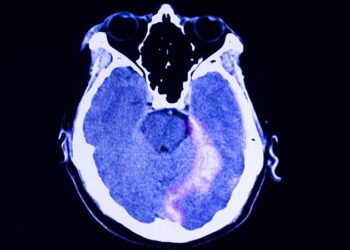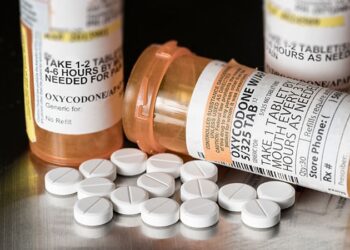TOPLINE:
In a decade-long study, a ratio of serum acute tryptase to serum baseline tryptase above 1.74 showed superior diagnostic performance compared with the current consensus formula, which requires serum acute tryptase to be greater than a personalized cutoff value. The ratio correctly identified more than two thirds of true cases while ruling out the majority of false cases in children with suspected anaphylaxis.
METHODOLOGY:
- Researchers reviewed medical records of 315 children (median age, 7.8 years; 56.2% boys) admitted to the emergency department with suspected anaphylaxis from January 2011 to December 2020 to assess the diagnostic performance of serum tryptase measurements.
- The diagnosis of anaphylaxis was confirmed when children showed at least one extracutaneous systemic symptom and had evidence of systemic mast cell activation or allergic sensitization to a trigger allergen.
- Those with a confirmed diagnosis constituted the anaphylaxis group (n = 175), while the remaining served as the control group (n = 142).
- Researchers compared the diagnostic performance of the consensus formula with that of five alternative tryptase interpretation algorithms.
TAKEAWAY:
- Food allergens triggered 82% of anaphylaxis reactions, with legumes, seeds, and nuts being the triggers in 36% of cases, followed by cow’s milk proteins in 28% of cases.
- Epinephrine was administered in 96 children with suspected anaphylaxis (30.3%), including 14 children who were initially misdiagnosed as having anaphylaxis due to cardiovascular involvement and a credible history of allergen exposure.
- The ratio of serum acute tryptase to serum baseline tryptase showed optimal diagnostic performance, with an area under the curve of 0.84, sensitivity of 66.7%, and specificity of 90% at a threshold of 1.74 — outperforming the current consensus formula, which has a sensitivity of 62.2% and specificity of 80%.
IN PRACTICE:
“Our study underlines the need for better implementation of both sAT [serum acute tryptase] and sBT [serum baseline tryptase] measurements at adequate sampling times in pediatric EDs [emergency departments] and contributes to the ongoing debate on the optimal interpretation of pediatric dynamic tryptase,” the authors wrote.
SOURCE:
Moïse Michel, PhD, with the Nîmes University Hospital, Nîmes, France, was the corresponding author of the study, which was published online on June 24 in the Journal of Allergy and Clinical Immunology: Global.
LIMITATIONS:
This study was limited by its retrospective design and the absence of grade 4 anaphylaxis cases in the cohort, limiting the evaluation of tryptase measurement performance.
DISCLOSURES:
This study did not receive any specific funding. One author reported receiving speaker or consultancy fees from various pharmaceutical manufacturers.
This article was created using several editorial tools, including AI, as part of the process. Human editors reviewed this content before publication.
Source link : https://www.medscape.com/viewarticle/tryptase-ratio-may-improve-diagnostic-accuracy-children-2025a1000hko?src=rss
Author :
Publish date : 2025-07-02 07:34:00
Copyright for syndicated content belongs to the linked Source.














